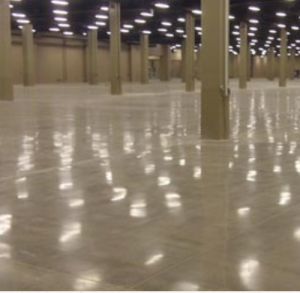What’s the Difference between Concrete Floor Treatments?
 After a period of use, concrete floors often need a treatment to make them visually appealing again. Or they need a treatment to protect them from damage.
After a period of use, concrete floors often need a treatment to make them visually appealing again. Or they need a treatment to protect them from damage.
Concrete floor treatments include concrete polishing and concrete staining, epoxy floor coating and urethane coating, and quartz and troweled mortar. We will examine the differences.
Concrete Polishing and Staining
This process both strengthens and beautifies the floor. A densifier actually adds strength to the cap of the concrete. While dyes and stains enhance the natural beauty of the floor.
Using the latest polishing equipment and diamond technology, Specialty Coatings can deliver a low or a high sheen.
Epoxy Coating Concrete
The purpose of an epoxy coating is to protect the surface of the concrete from things like chemicals, hot water, forklifts, and steel wheels.
The type of preparation necessary depends on the floor’s condition. For example, it might need shot blasting. A professional concrete coating installer, such as Specialty Coatings, can recommend the proper preparation method that is needed for the epoxy coating to adhere to the concrete.
Urethane Top-coating for Epoxy
Urethane is ideal as a topcoat over an epoxy coating because it won’t yellow over time. Additionally, urethane has up to three times better abrasion resistance than epoxy.
Quartz
Quartz floors use epoxies, urethanes and quartz sand to protect the concrete floor and also enhance appearance. Floor preparation is similar to that of epoxy coating.
Troweled Mortars
This treatment uses a mix of epoxy or urethane-based sand mortar. Troweled systems can be used as a protective overlay on new floors, or to restore and repair older worn surfaces. Preparation for this coating is similar to that of epoxy coating.
Request More Information
If you’re not sure which concrete treatment solution is best for your business, give us a call at 615.591.9491 or click here to request a quote.

